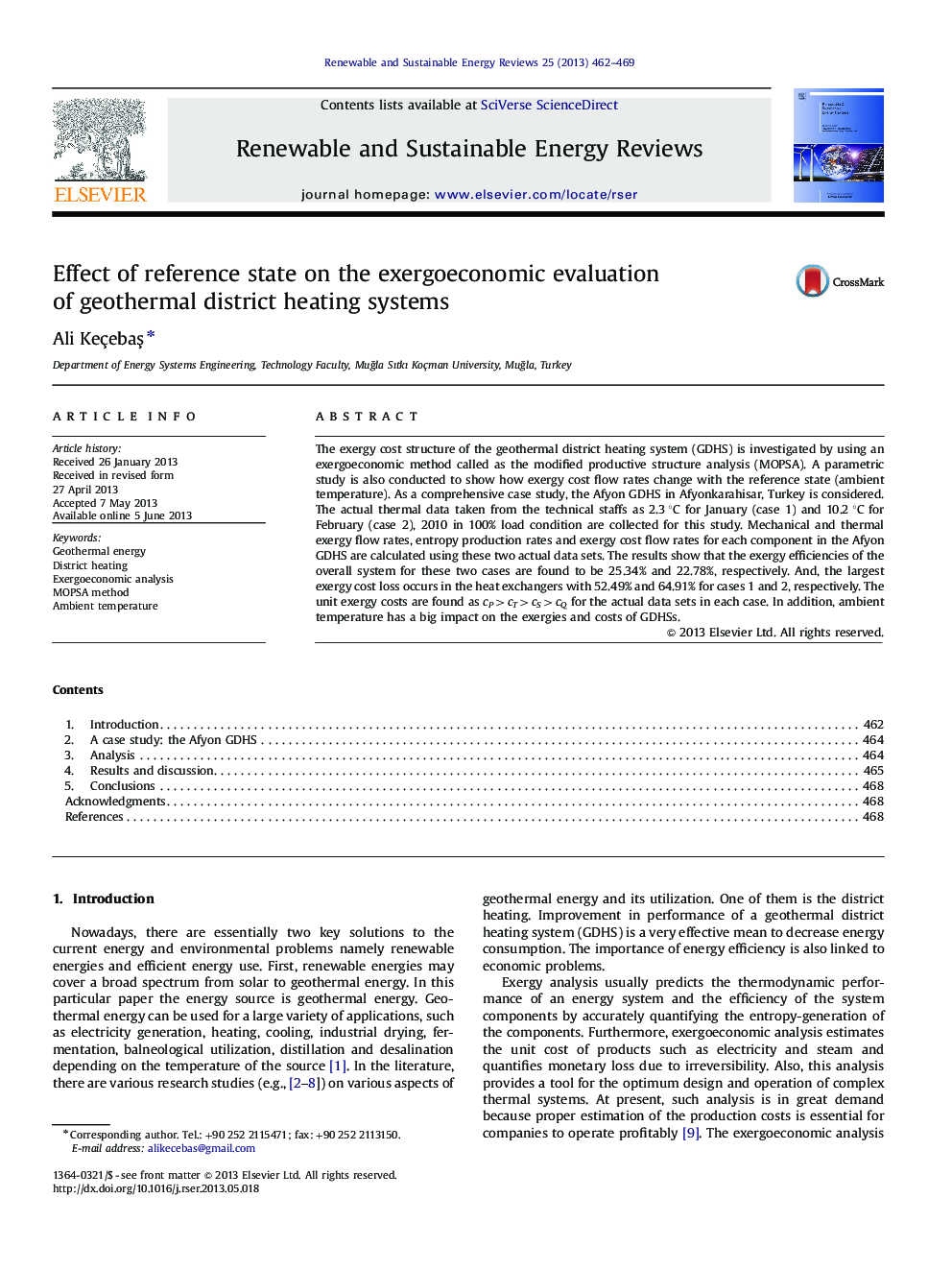| Article ID | Journal | Published Year | Pages | File Type |
|---|---|---|---|---|
| 8121674 | Renewable and Sustainable Energy Reviews | 2013 | 8 Pages |
Abstract
The exergy cost structure of the geothermal district heating system (GDHS) is investigated by using an exergoeconomic method called as the modified productive structure analysis (MOPSA). A parametric study is also conducted to show how exergy cost flow rates change with the reference state (ambient temperature). As a comprehensive case study, the Afyon GDHS in Afyonkarahisar, Turkey is considered. The actual thermal data taken from the technical staffs as 2.3 °C for January (case 1) and 10.2 °C for February (case 2), 2010 in 100% load condition are collected for this study. Mechanical and thermal exergy flow rates, entropy production rates and exergy cost flow rates for each component in the Afyon GDHS are calculated using these two actual data sets. The results show that the exergy efficiencies of the overall system for these two cases are found to be 25.34% and 22.78%, respectively. And, the largest exergy cost loss occurs in the heat exchangers with 52.49% and 64.91% for cases 1 and 2, respectively. The unit exergy costs are found as cP>cT>cS>cQ for the actual data sets in each case. In addition, ambient temperature has a big impact on the exergies and costs of GDHSs.
Related Topics
Physical Sciences and Engineering
Energy
Renewable Energy, Sustainability and the Environment
Authors
Ali KeçebaÅ,
